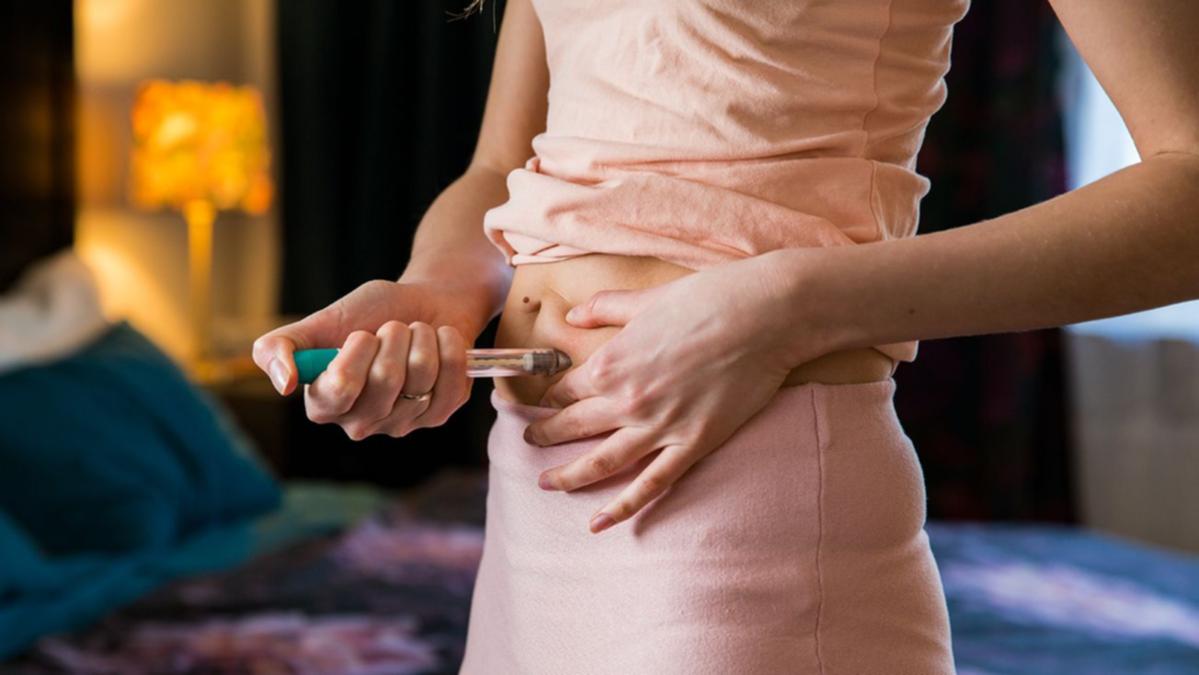Developed to assist women suffering with infertility, ovarian rejuvenation is a quite new method Platelet-rich plasma (PRP) injections into the ovaries are used to induce the development of fresh follicles, so perhaps raising the likelihood of pregnancy.
Scientifically, a woman arrives at this world carrying all the eggs needed for conception during her reproductive lifetime. Menopause starts when the ovaries' egg cells reject each other. It leaves the egg stores to reduce in both quality and quantity. Women thus lack the egg cells needed to generate eggs. Still, women might have eggs inside their ovaries after menopause. Most of these eggs, meanwhile, are latent and will merely sit there and finally expire, leaving nothing. Proposed to re-awaken the egg maturation and development in the converting of those eggs into growing follicles and release them inside the ovary is the recently started process known as ovarian rejuvenation. It gives women even after menopause an opportunity to conceive using their own eggs.
- How Long Do Pregnancy Symptoms Last After Abortion
- How To Sleep With A Pregnancy Pillow?
- Positive Ovulation Test When Pregnant: What You Need To Know?
What is Ovarian Rejuvenation?

In essence, ovarian rejuvenation is the stimulation of the ovaries to generate high-quality eggs for fertilization and cause follicle development.
Definition of ovarian rejuvenation
In women whose reduced ovarian reserve or early ovarian failure has caused infertility, it is the process of restoring or enhancing ovarian function.
As more women postpone childbearing and many experience infertility due to age-related alterations in their reproductive system, this operation has become rather popular recently.
Ovarian rejuvenation is based on the theory that it might induce the ovaries to generate fresh follicles and thereby boost the egg count ready for fertilization. This can raise a woman's chances of either natural or IVF conception.
There are numerous approaches of ovarian rejuvenation, among which are:
Stem cell ovarian rejuvenation therapy is the process of implacing patient stem cells into the ovaries to induce fresh egg development.
In order to boost the development of fresh eggs, platelet-rich plasma (PRP) for fertility is injected into the ovaries. Growth elements found in the platelets could help cells develop and regenerate.
Removal of a little amount of ovarian tissue from the patient and subsequent transplantation back into the body is known as ovarian tissue transplanting. New eggs can then come from the transplanted tissue.
Why does fertility drop as one ages?
Every woman is unique, hence age cannot define fertility. Still, fertility falls with age in general. In women, the reproductive potentials decrease from 35 onward and following 40, the chances of naturally occurring pregnancy in any one month will be less than 10%. Decline in eggs is mostly the cause of this falling fertility. The ovaries become less in charge of the hormones triggering ovulation after menopause arrives. Aging has certain consequences on a woman's ovarian reserve:
A woman's most fertile years fall in her 20s through mid-30s.
After 30, the fertility level declines; after 35 years, it drops somewhat sharply.
Women have roughly 20% chance monthly in their most fertile years to get pregnant.
Women over forty have just 5% percent probability of becoming pregnant in any one month.
Premature ovarian failure (POF) strikes roughly 1% of women. That is the state of their ovaries before they become forty.
A woman's ovaries will lose their capacity to generate the hormones that cause follicles to grow and reach a suitable stage with aging.
How to assess a woman's eggs?
Women's eggs define pregnancy, so it can be assessed using the following techniques.
Anti Mullerian Hormone (AMH) levels allow one to evaluate a woman's egg reserve quantity.
Ultrasound can check women's egg reserve amount.
Apart than IVF—egg harvesting and visual microscopic inspection in vitro—there is no other way to evaluate the quality of woman's eggs.
Procedure of ovarian rejuvenation
Daily evolution in the methods of ovarian rejuvenation age limit is evident. Certain approaches of achieving it are:
regeneration of the ovarian arteries by means of stem cells infusion. Scientists knew Stem cells could transform into any kind of cell under the presence of growth elements. This provides the means to stimulate ovary stem cells so transforming the egg cells. It will help the ovaries to resume their egg-laying capacity.
Made from the woman's own blood sample, platelet rich plasma is injected into her ovaries under the name PRP treatment for ovarian rejuvenation. The platelets in the plasma component discharge several growth agents. By means of new skin, blood vessels, tissues, and new nerve endings, these growth factors induce wound healing. Rejuvenation treatment uses PRL's capacity for wound repair and regeneration to help generate new egg precursor cells and restore ovarian function.It has assisted few women in peri-menopausal age conceive using their own eggs and demonstrated good outcomes.
Ovarian fragmentation for follicular activation (OFFA) is one approach to reach ovarian rejuvenation age limit. Here the latent follicles are awakened, allowing the aging process to be somewhat reversed, so producing viable eggs.
Ideal Patients for Ovarian Rejuvenation Treatment

- Women entering their advanced mother years
- Women suffering from Premature Ovarian Insufficiency (POI) usually younger than forty years.
- Women with inadequate ovarian reserve and those with low Anti-Mullerian Hormone (AMH) levels—a hormone produced by cells in developing egg sags
Women who experience inexplicable infertility
Women undergoing many failed IVF treatments due to low egg quantity and quality are suffering from poor embryo quality.
Procedure for Ovarian Rejuvenation
Under a minimally invasive technique called prp ovarian rejuvenation cost, a woman's blood products—such as autologous stem cells or platelet-rich plasma (PRP)—are injected into the ovaries.
These blood products include growth factors and other elements that might encourage ovarian tissue regeneration and boost fresh follicle development.
This should raise the quality and amount of eggs generated by the ovaries, hence perhaps renewing fertility and raising the possibility of conception.
Ovarian rejuvenation proceeds in numerous stages.
The doctor first extracts a tiny bit of the patient's blood and then spins it to separate the platelets or stem cells from the rest. They next focus the platelets to produce the PRP solution.
The doctor then straight injects the blood products into the ovaries using ultrasonic guidance.
Usually carried done in an outpatient environment, the operation lasts around thirty minutes.
Allow me to clarify:
Advantues of ovarian rejuvenation
The possible advantages of ovarian rejuvenation treatment include in:
- More chances for either natural or assisted reproductive technologies like IVF.
- Maintenance of fertility for ladies enduring cancer treatment that might harm their ovaries.
- Enhancement in the present egg quality.
- Return of aging ovaries' purpose.
- Offering ladies suffering with infertility a much-needed remedy.
Side Effects and Risks from Ovarian Rejuvenation

Like every medical operation, stem cell ovarian rejuvenation has few possible side effects and hazards. These can include:
Infection around the injection site
Bruising or bleeding at the injection location
Cysts of the ovaries or other anomalies
Syndrome of ovarian hyperstimulation, or OHSS
These hazards are usually regarded as minor, though, and most women have relatively slight discomfort or none at all after the operation.
Safety and Pre-operative Care for Ovarian Rejuvenation
Should you be thinking about ovarian rejuvenation, you should follow many pre-operative care guidelines and precautions to guarantee a safe and effective treatment.
See a fertility doctor to find out whether ovarian rejuvenation is a reasonable choice.
- Talking with the doctor about any possible dangers and rewards of the operation.
- Starting a comprehensive medical review to evaluate general condition and fit for the operation.
- Following any particular pre-operative advice the doctor offers, such discontinuing some drugs or fasting before the surgery
- Getting ready to control discomfort or agony experienced following the surgery.
After ovarian rejuvenation, post-operative recovery
Following the below advice and looking for yourself will help to guarantee a seamless recovery following the ovarian rejuvenation operation.
- Rest: To let your body heal following the surgery, spend several days relaxing.
- Medications: As directed by your prescription writer.
- Steer clear of physically demanding exercises and activities for a few days to prevent problems.
- Diet: To encourage healing, eat a balanced and sensible one.
To keep hydrated, sip on lots of liquids.
- See your doctor for all follow-up visits to track your recovery and take care of any issues. .
- Your doctor might counsel against sexual activity for a few days following the surgery.
- If needed, take some time off from work so your body may heal.
- Recall that everyone recovers differently. Not hesitate to call your doctor if you have questions or worries during your recovery.








